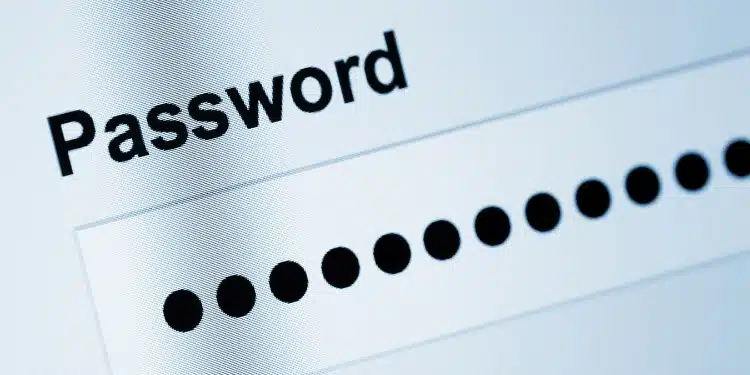Protect Your Savings: Top Password Security Tips for South African Banking
The Increasing Threat of Cybercrime in South Africa
Summary of Financial Losses
The increase of cybercrime in South Africa has become a serious concern, highlighted by a staggering loss of R40.5 million from fraudulent disinvestments and withdrawals in the past year alone.
This figure, reported by ASISA, highlights not only the severe financial impact on individuals and businesses but also the urgency for enhanced cybersecurity measures.
Moreover, the cases prevented amounted to an additional R287.6 million, showcasing the proactive steps taken yet underscoring the persistent threat.
Targeting Financial Accounts
Cybercriminals use various tactics to access your financial accounts, with password breaches being the most common method.
They often employ techniques such as phishing and spear phishing.
Even those who are tech-savvy can fall victim to these schemes if they are not vigilant.
Once cybercriminals obtain your password, gaining access to your accounts and financial information becomes relatively simple, which can lead to potentially devastating consequences.
Vulnerability through Digital Banking
Digital banking offers unparalleled convenience, but it also increases vulnerability.
With more people adopting digital banking for saving, investing, and everyday transactions, the attack surface for cybercriminals has expanded.
Mobile devices, often used for digital banking, can be easily compromised if not adequately protected.
Cybercriminals exploit every opportunity—from weak passwords to unsecure networks—to infiltrate banking accounts, making it crucial for users to follow stringent cybersecurity practices.
These insights underline the necessity for robust and complex passwords, vigilant monitoring of account activity, and advanced security measures.
To fortify your digital banking experience, adopting strong passwords and leveraging additional protective measures are imperative strategies to combat the growing cyber threat.
Creating Strong, Unbreakable Passwords
As we increasingly rely on digital banking, the first line of defense against cybercriminals targeting financial accounts is a strong password.
Adopting these practices will help you create strong, secure passwords to protect your savings effectively.

Best Practices for Password Creation
A good password should be:
- 💰Long: Aim for at least 12-15 characters.
- 💰Complex: Include upper and lower-case letters, numbers, and special characters.
- 💰Unique: Avoid using easily guessable information like birthdays or common words.
For example, a password such as Tru$tyH@v3n!92 is much harder to crack than password123.
Implementing Passphrases for Enhanced Security
Passphrases are a great way to create more secure and memorable passwords.
A passphrase uses a combination of random words, which makes it easy to remember but hard to guess.
For instance, Avo1dComm0nP@tterns!.
The Password Puzzle Method
If you struggle with creating complex passwords, try the Password Puzzle Method:
- Start with the first and last letter of the application (e.g., Facebook: F and K).
- Convert them into numbers (F = 6, K = 11).
- Add your personal base password (e.g., Sunset!92).
- Mix in a unique pattern by inserting your number sequence within your base password.
The final password could look like S6unse11t!92 — unique, memorable, and strong.
Improve the security of your digital banking accounts and reduce the risks of unauthorized access.
As passwords are just one aspect of account security, it’s essential to explore other measures like secure storage and multi-factor authentication for comprehensive protection.
Secure Password Management Solutions
Choosing the Right Password Manager
Using a dedicated password manager is a highly recommended solution.
Options like 1Password, Bitwarden, LastPass, Dashlane, Keeper, and NordPass offer secure, user-friendly platforms for storing and generating strong, unique passwords.
These tools not only save your passwords but also encrypt them, ensuring that even if the data is compromised, it remains unreadable to unauthorized users.
Password managers have features such as:
- 💰Two-factor authentication (2FA) integration: Adds an extra layer of security.
- 💰Password generation: Automatically creates strong, complex passwords.
- 💰Secure password sharing: Allows sharing passwords safely between trusted users.
The Risks of Browser-based Password Storage
While using built-in password managers in browsers like Chrome or Edge might seem convenient, they come with significant risks, especially for sensitive accounts such as banking.
Browsers are more prone to attacks and vulnerabilities, and if your browser is compromised, so is your entire vault of passwords.
This is why experts like Linda Morris advise against using browser-based storage for banking passwords and instead recommend dedicated password managers that offer comprehensive security features.
The Crucial Role of Encrypted Storage Solutions
Encryption is the backbone of secure password storage.
When passwords are encrypted, they are transformed into a secure code that requires a key to be decoded, making unauthorized access difficult.
Dedicated password managers use advanced encryption methods to protect your data, ensuring that even if their servers are breached, your passwords remain secure.
Avoid storing passwords in plain text on your computer or phone, as this makes them easily accessible to anyone who gains physical or remote access to your device.
By following these practices and understanding the importance of secure password management, you can significantly reduce unauthorized access to your financial accounts.
Strengthen your security further by incorporating multi-factor authentication and other advanced measures.
Multi-Factor Authentication: Your Second Line of Defense
Understanding MFA and Its Role in Account Security
Multi-Factor Authentication is a important tool to your financial accounts.
Essentially, MFA adds an extra layer of security by requiring users to provide two or more verification factors to gain access to a resource such as an online account.
Simply put, it combines “something you know” (like your password) with “something you have” (like a security token or mobile device) or “something you are” (biometrics) to enhance security.
By making it harder for unauthorized users to access your financial accounts, MFA can significantly reduce the risk of cyber threats.
If a cybercriminal obtains your password, they still need the second authentication factor to access your account, making unauthorized access significantly more difficult.
Different Types of Authentication Factors
There are several types of authentication factors that can be utilized in MFA setups:
- One-Time Passwords (OTP): A common method that involves sending a time-sensitive, single-use code to your registered mobile number or email. Examples include Google Authenticator and SMS codes.
- Biometrics: This method verifies your identity based on biological traits like fingerprints or facial recognition. Many financial institutions incorporate biometric verification in their mobile banking apps.
- Hardware Tokens: These devices generate a unique code that changes periodically. YubiKey and RSA tokens are common examples.
How to Enable and Use MFA for Maximum Protection
Enabling MFA is straightforward and can typically be done through your financial institution’s security settings.
Follow these steps for optimized protection:
- Check Availability: Verify if your financial institution offers MFA. Most reputable banks and investment firms provide this security feature.
- Choose Your Method: Decide which authentication method(s) you want to use. OTPs and biometric methods are most commonly recommended.
- Set It Up: Navigate to the security settings of your account. Look for an option labeled “Set up MFA,” “Two-Factor Authentication,” or something similar. Follow the prompts to complete the setup.
- Verify and Test: Ensure that the MFA methods are working correctly. Test the process to familiarize yourself with how it works.
Using MFA can seem like an extra step, but its added protection far outweighs any inconvenience.
Equip your accounts today to bolster your financial security.
Biometric Security: Benefits and Limitations
Advantages of Biometric Authentication
Biometric authentication is a powerful tool in the fight against cybercrime.
It leverages unique biological traits, such as fingerprints or facial recognition, making it exceptionally difficult for unauthorized individuals to access your accounts.
With the rise of digital banking, many financial institutions have integrated biometric security in their mobile apps, providing a seamless yet secure user experience.
Biometrics offer a high level of convenience.
You don’t need to remember complex passwords; a quick face scan or fingerprint swipe grants access instantly.
This ease of usability, coupled with robust security, makes biometrics a popular choice among users and institutions alike.
Challenges with Biometric Security
While biometric technology is highly advanced, it is not without its limitations.
Various factors can affect the reliability of fingerprint and facial recognition systems.
For instance, worn or wet skin may make fingerprints unreadable, and changes in appearance, such as glasses, makeup, or lighting conditions, can interfere with facial recognition accuracy.
Moreover, not all devices are equally adept at recognizing biometric data.
Biometric scanners’ effectiveness varies across different smartphones and tablets.
A significant drawback is that, unlike passwords, biometric data cannot be changed if compromised.
Therefore, if your biometric data is stolen, it poses a long-term security risk.
Best Practices for Enhancing Biometric Security
To mitigate these challenges, it is best to combine biometric authentication with other security measures. Here are some practices to follow:
Understanding and adopting these practices will help maximize the benefits of biometric security while minimizing risks, thereby safeguarding your financial accounts more effectively.
Employing a combination of biometric and traditional security measures creates a robust defense against unauthorized access.
Additional Security Measures for Complete Protection
Digital safety is critical in today’s interconnected world. Here are key measures to ensure your financial accounts remain secure.
The Role of Antivirus and Malware Protection Across All Devices
One of the fundamental defenses against cyber threats is maintaining robust antivirus and malware protection across all your devices.
This includes PCs, laptops, tablets, and smartphones.
Smart About Money states that keeping all internet-connected devices equipped with updated antivirus and anti-malware software can greatly lower the risk of cyberattacks.
Each device in your use becomes a potential entry point for cybercriminals, so it’s crucial to safeguard them comprehensively.
Monitoring Account Activity and Enabling Real-Time Alerts
Proactively monitoring your account activity adds a crucial protective layer against unauthorized access and fraud.
Many financial institutions recommend setting up real-time alerts, which inform you instantly about any suspicious activity on your account.
This quick notification system enables you to respond promptly, potentially preventing major financial losses.
Make it a habit to regularly review your statements and transactions for discrepancies.
AI-Driven Fraud Detection Systems
Advancements in technology have led to the development of sophisticated fraud detection systems powered by artificial intelligence (AI).
Financial institutions leverage AI-driven tools to analyze transaction patterns and detect anomalies in real-time.
These systems are designed to flag and block suspicious activities before they escalate into fraud.
By staying a step ahead of cybercriminals, AI provides an indispensable layer of protection for your financial assets.
Securing your financial accounts requires a multi-faceted strategy.
By combining strong antivirus and malware protection with diligent account monitoring and advanced AI-driven fraud detection, this creates sa powerful defense against cyber threats.





